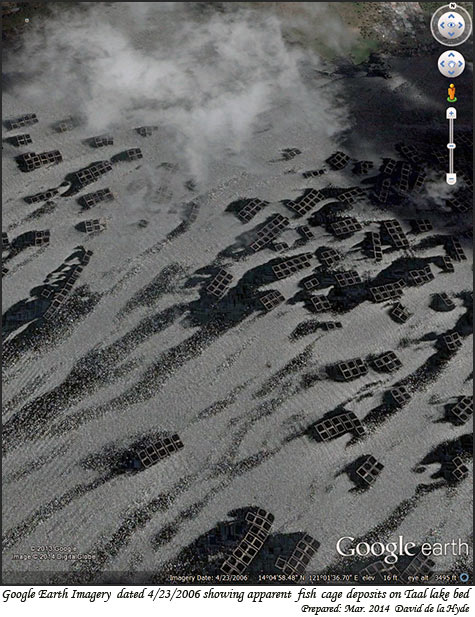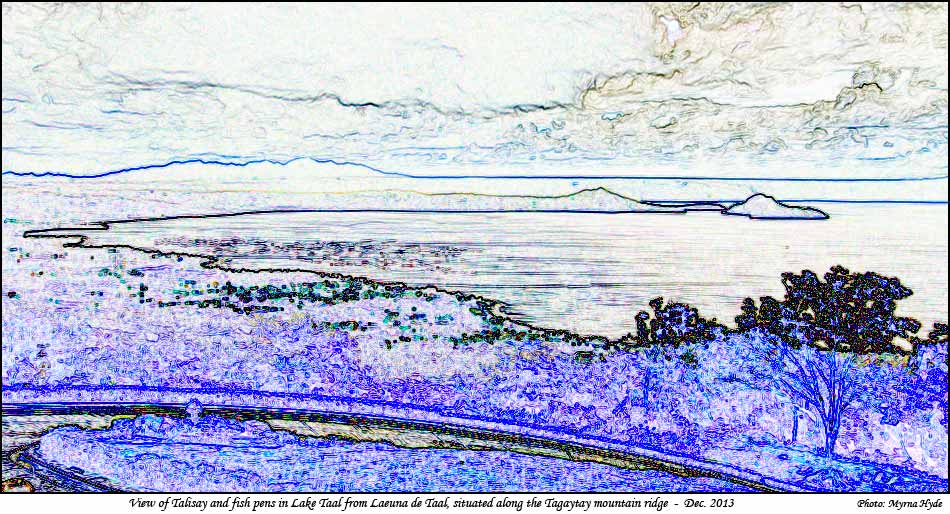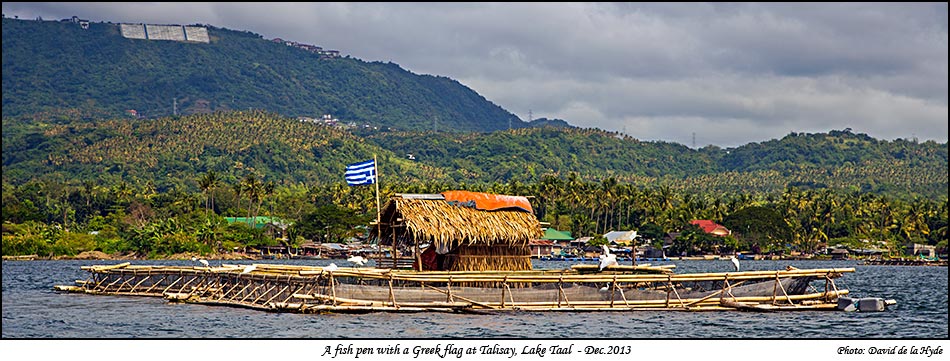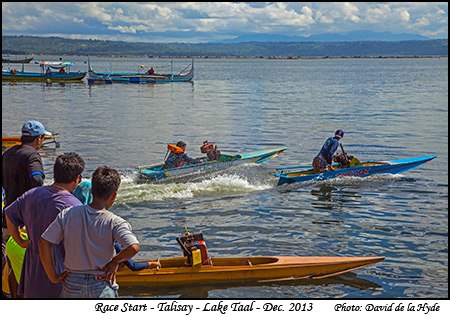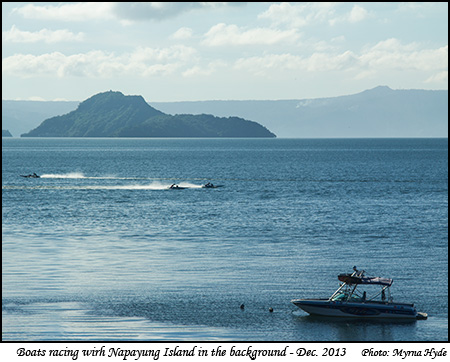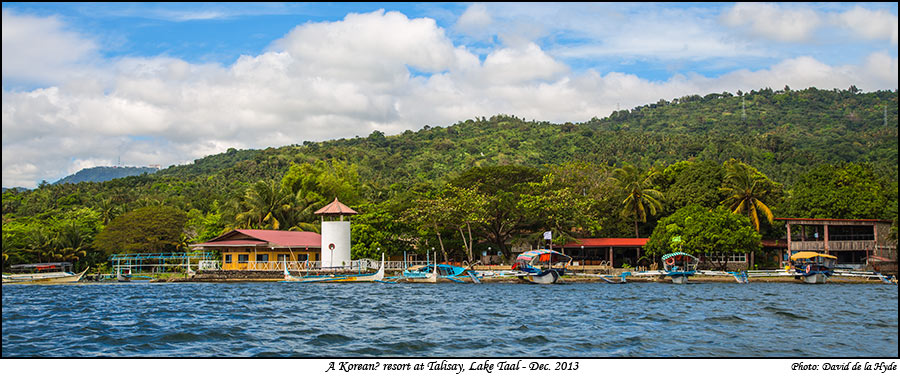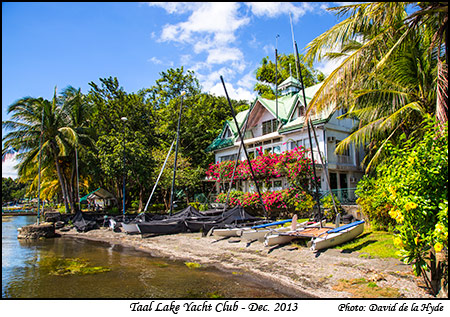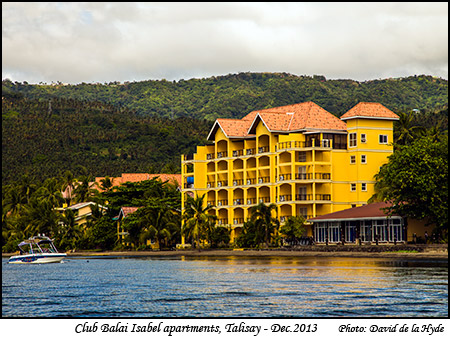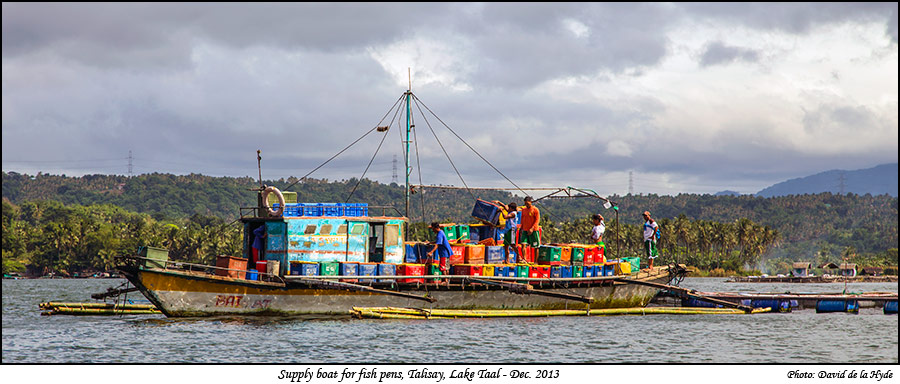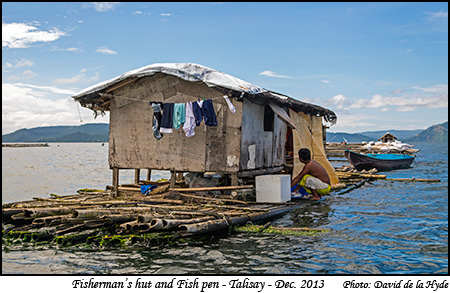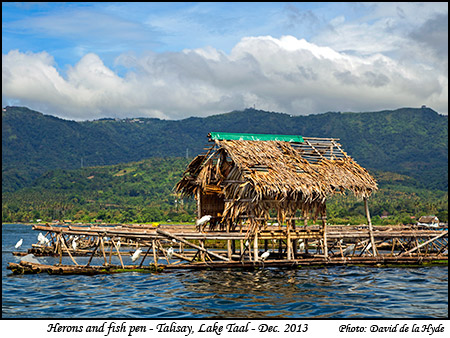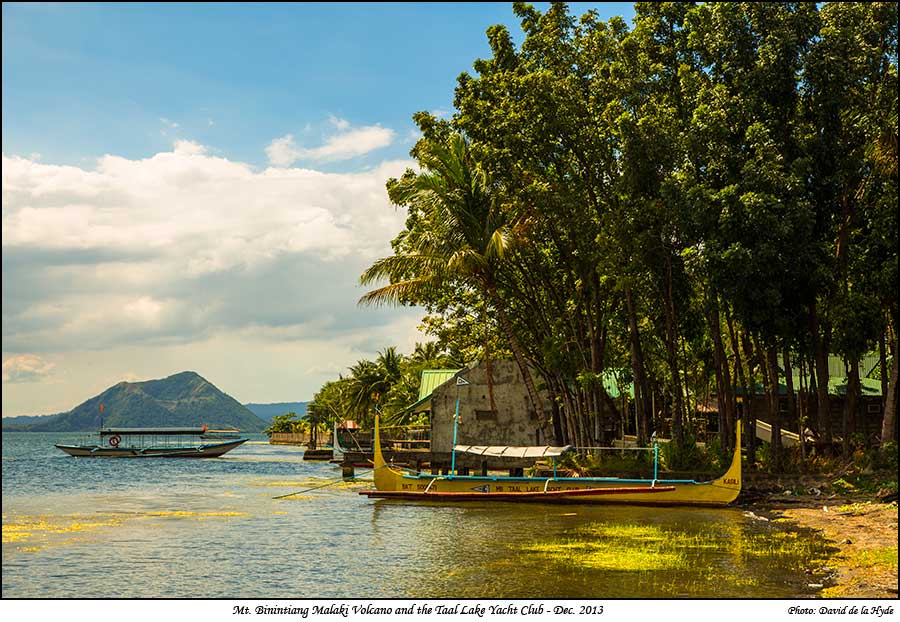TALISAY, LAKE TAAL - FISH CAGES
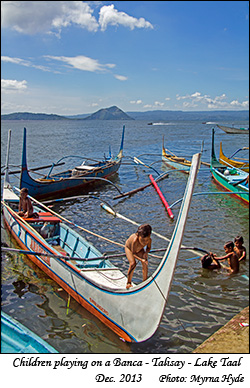
In two of the adjacent photos can be seen Napayung Island and the rise on it's left is Maria Paz.
Taal, which has a surface area of 24,356 square meters, is the Philippines third largest lake next to Laguna and Lanao Lakes.
Illustrated in some of the photos are fish cages in Barangays Tumaway and Quiling in Talisay. Fish pens are differentiated from cages by having as their bottom boundary the lake bed itself. The main species farmed are tilapia and milk-fish (bangus).
The ideal size for fish cages is 10 by 10 meters with a depth of six meters, but some cages in the area are 15 meters deep. Fingerlings, meanwhile, should be from 30,000 to 50,000 per cage, but some cages have 100,000.
Based on BFAR (Bureau of Fisheries and Aquatic Resources Records" , Taal lake has an allowable 6,000 fish cages with an estimated aquaculture production of 54, 000 metric tons and an equivalent value of P4.05 billion annually.
Overfeeding is one of the major causes of the fishkill. There are two types of feeds, the floating kind and the sinking kind. Fishcagers mostly use the sinking kind because it is cheaper. It is made up of sticky pellets which break up into fine powder when they hit the water. The main ingredient of the feeds is chicken manure. Let us say that a cager uses 20 kilos of feeds per day, only about half or even less is consumed. The other 10 kilos sinks to the bottom of the deep lake.
... a rough estimate is one ton of feeds per cage per month. Due to overfeeding, let us say the cagers use two tons. Let us take the conservative figure of 10,000 cages, which translates into a total lake input of a staggering 20,000 tons of feeds a month, half of which, or 10,000 tons sinks to the bottom of the lake. Let us say the fish defecate half of the 10,000 tons of feeds. So that is a total of 15,000 tons per month at the bottom of the lake. This translates into 180,000 tons of waste per year at the bottom of the lake.
Reference: THE TAAL LAKE FISH KILL by Bernie Lopez. (www.sisterraquel.com/2011/12/eastwind-journals-15-taal-lake-fishkill/)
After our visit in December 2013 the following was published by ABS-CBN News in January 2014:
Posted at 01/21/2014
BATANGAS - Around 120 tons or P10.5 million worth of tilapia and bangus were lost to a fish kill that hit parts of Taal Lake in Batangas province over the weekend, the Bureau of Fisheries and Aquatic Resources (BFAR) said.
BFAR (Region 4-A) Regional Director Esmeralda Paz Manalang said sulfur upwelling in the Taal Lake triggered the fish kill in barangays Aya, Quiling, Tumaway and Sampaloc in Talisay, Batangas late last week.
Continued RHS =>
